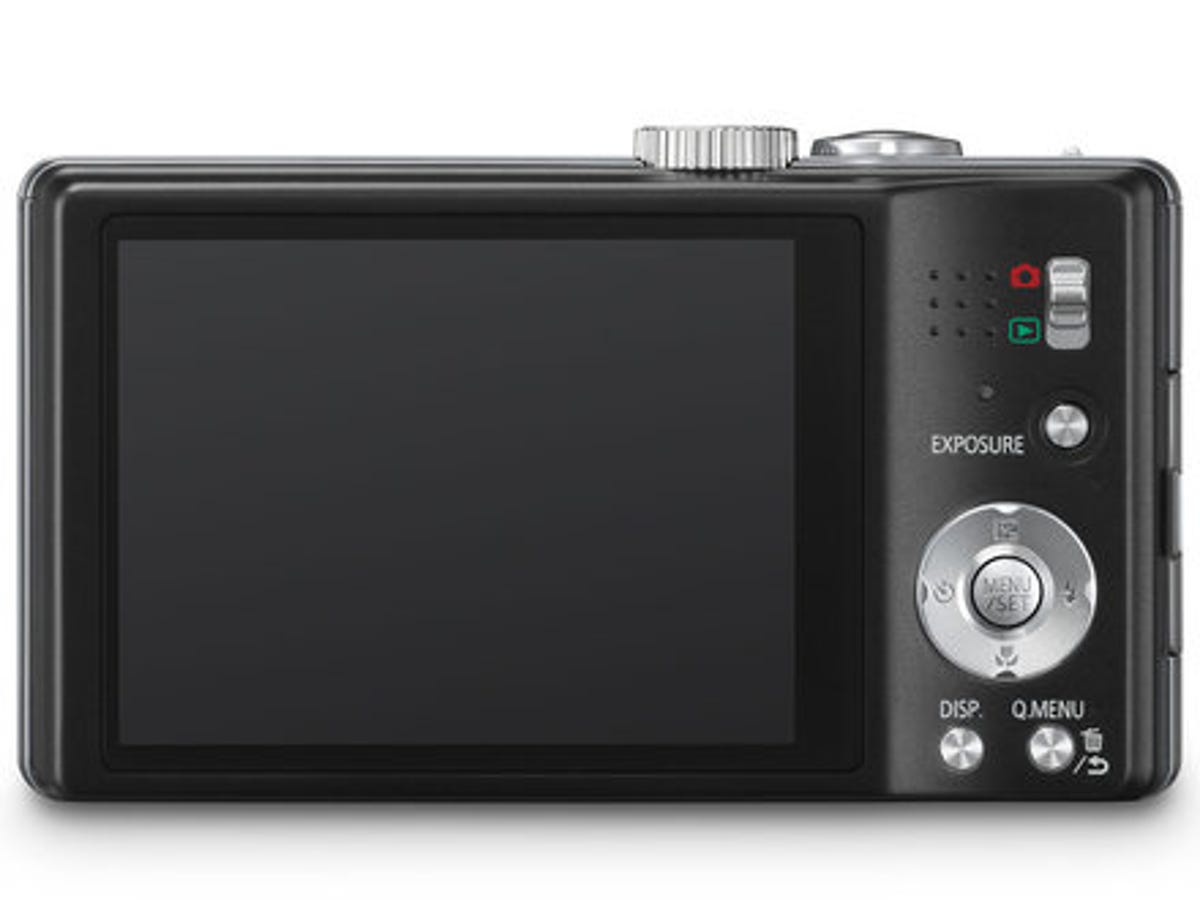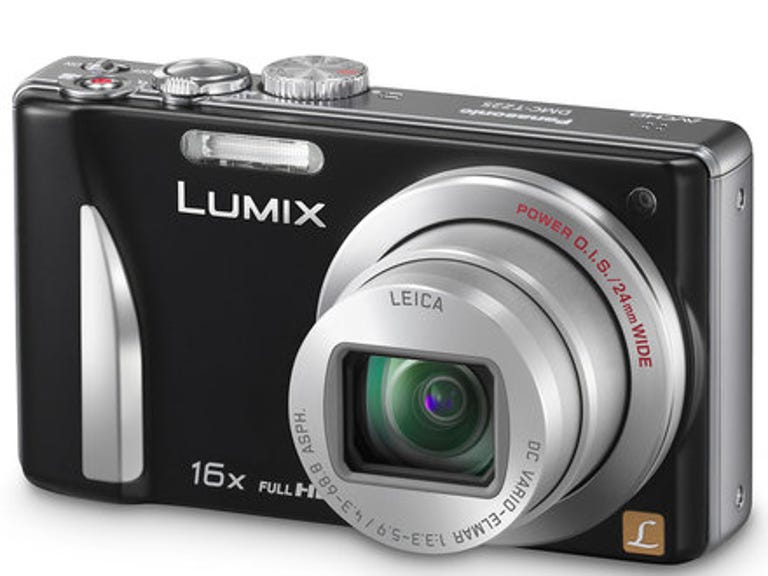 Why You Can Trust CNET
Why You Can Trust CNET Panasonic Lumix DMC-TZ25 review: Panasonic Lumix DMC-TZ25
You'll get some great shots with the well-priced Panasonic Lumix DMC-TZ25, thanks largely to its long zoom and a glut of physical controls.
The Panasonic Lumix DMC-TZ25 is rather plain and boxy. If it were human you might call it 'big boned', but there's very good reason for that. Quite simply, it's far more accomplished than smaller rivals and packs in a lot, with dedicated shutter and aperture priority modes on a physical dial and an impressive 16x zoom to boot.
The Good
The Bad
The Bottom Line
You can get your hands on one for around £210.
Specs and features
The lens is the camera's main attraction, equivalent to 24-384mm on a conventional 35mm camera. That's an impressive range. Equally so is the maximum aperture at full telephoto, which stands at f/5.9. At wide angle it's a more conventional f/3.3.

Although you'd mostly be interested in a wide aperture for portrait work or shooting close-up or 'macro' images, it can also play a role in landscape photography if your scene has a defined point of interest on which to focus.
The image below was shot around half of the way through the zoom range -- at an equivalent focal length of 155mm on a 35mm camera -- with a fairly wide aperture of f/5.3.
The church itself is sharp, with well-reproduced brickwork and tiles, and strong contrasts. Because the TZ25 can maintain a wide aperture at this distance and beyond, it's possible to blur the foreground, drawing the eye to the subject in a way that you would with a macro shot at closer range. The corn that sits at the front of the frame is attractively blurred.
The zoom is by far this camera's most appealing attribute, allowing you to get extremely close to otherwise distant subjects, while the 12.1-megapixel sensor, delivering 4,000x3,000-pixel images, leaves you sufficient room to crop in if you need to isolate your subject.
One benefit of building a camera inside a slightly chunkier body is the extra space it gives for manual controls. Touchscreen phobics will welcome Panasonic's decision to stick with conventional buttons and switches. A rotary dial on the top changes between shooting modes, while a four-way controller on the back works in concert with a dedicated exposure button to give you control over shutter and aperture settings. It's very logical and takes just a few seconds to get to grips with.
If you prefer to leave everything up to the camera, you can switch to Intelligent Auto mode and spend your time thinking more about composition than how to best expose your subject. There are two slots on the dial for custom settings too, which you can specify in the software.
Finally, the My Scene mode remembers the last setting you chose from the creative control menu, which includes options like mono, high key and sepia photo styles. This is a big time saver. Set it to mono, for example, and you can quickly switch back to it with a turn of the dial rather than searching through the on-screen menus.
The mono conversion is excellent with good, sharp contrasts in the finished image and plenty of detail. In my tests under an overcast sky, it was also able to reduce the sensitivity from ISO 250 to ISO 200 in this mode, thereby reducing the very slight noise in the higher sensitivity image for a cleaner result overall.
The fastest shutter speed is 1/4,000 second and the slowest a full 15 seconds. Sensitivity runs on a scale of ISO 100 to ISO 3,200, with an option to push it to ISO 6,400 in high sensitivity mode.
Performance at the standard maximum of ISO 3,200 was good, with colours accurately retained across the frame. Naturally, there was considerable noise in the result, which made finer text on the back of some food tins impossible to read. But for general scenic photography in low light, the result would be perfectly acceptable.
Stills tests
The TZ25's macro performance is stunning. At 3cm, the focusing distance puts it close to the front of the pack of competing cameras, and the shallow depth of field leads to a rapid fall-off in the point of focus.
The captured image below is flawless, bringing out minute detail that's hard to see with the naked eye. The stamen on this flower are extremely well rendered, with the receptors at the end of each one clearly picked out against a background of very similar colour.
The Leica-built lens did an excellent job of keeping everything in focus, right into the corners of the frame. While many cameras perform much better at the centre of the frame than the edges due to not having to bend the light to an extreme degree, there was no such problem here.
However, it didn't do quite so well when tasked with shooting a regular grid, which tests for barrel and pin-cushion distortion. A perfect result would see all of the vertical and horizontal lines running parallel to their neighbours, but as can be seen in the shot below, there is some evidence of pin-cushion distortion, where the lines bow out towards the centres of each edge.
Incoming light was extremely well handled throughout my tests and the TZ25 did an excellent job of balancing shadows and highlights in most scenes. There was some fringing where the metering point was significantly darker than, for example, the sky. This leads to a loss of detail on fine subject matter that abutted those areas of the picture. But there was very little evidence of chromatic aberration in my tests.
Chromatic aberration is an unwanted effect exhibited by most cameras to a greater or lesser degree. It's caused by the lens not quite focusing each wavelength of incoming light at the same point on the sensor. The result is a coloured fringe against sharp contrasts such as branches overlaying the sky, or the corners of buildings and window frames.
Here, the TZ25 did just that on some overhanging tree branches, but it's easily excused as it was using the darker top of the stile as its metering point. As a result, it kept the main area of interest within this frame accurately exposed.
In a more evenly composed frame taken just a few steps forward, it's able to meter with greater accuracy for the expanse of sky, which takes up close to a quarter of the picture, and thus fringing is not an issue.
The TZ25 consistently did an excellent job of accurately exposing areas with very narrow tonal variation in my tests. The flowering elder tree below contains little other than green and white, yet when zoomed to 100 per cent, the individual flowers are easy to pick out against one another. There is plenty of detail within the darker parts of the foliage waiting to be recovered in post-production.
Video test
The TZ25 shoots HD video at 1,920x1,080-pixel resolution, 50 frames per second interlaced or 1,280x720 pixels at 50fps progressive.
The video results achieved in my tests were very good, with smooth and unstepped transitions where it had to compensate for changing light levels, and detailed capture of fast-moving subjects and stark contrasts, such as flowing water on a weir.
The zoom was particularly impressive here. The motors weren't heard on the soundtrack at all, which means you can happily put this camera's best feature to use in your movies as well as your stills photography.
Conclusion
The design of the TZ25 might not turn many heads but its output certainly will. Results were consistently true to the original scenes throughout my tests, with accurate colour and sharp, well-defined detail.
It's positively bristling with physical controls so you can quickly switch between settings depending on your need, without having to work through the menus. This greatly increases the chance you'll get the shot you're after more often and means less tech-literate users will probably find it easier to use.
The zoom is a major draw. It's quick to find its position and doesn't impact your movies by making itself heard on the soundtrack.
All in all, there's plenty to like here. It didn't do so well in the geometry test, but you'd unlikely take many pictures of such rigidly-defined subjects in real life as the one above. Where it matters most -- the business of daily photography -- the TZ25 has plenty to offer. It won't disappoint.


